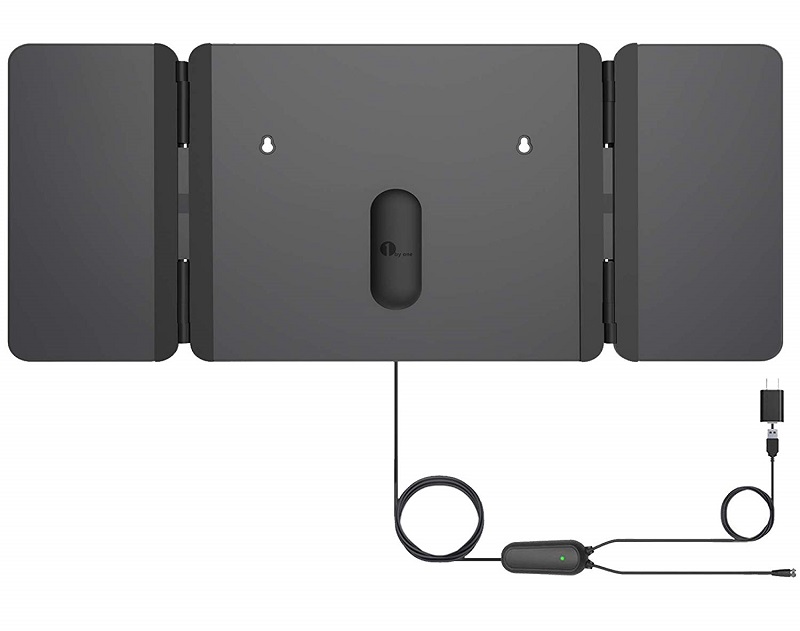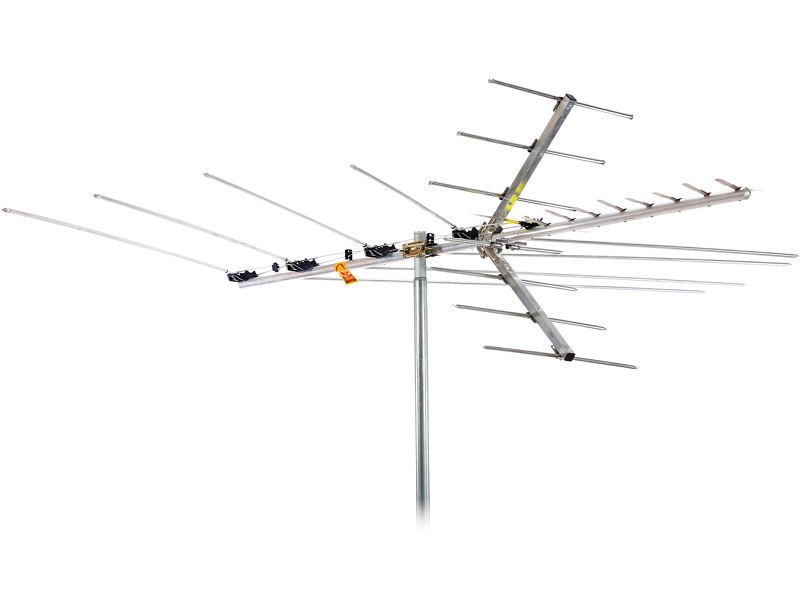Recently, the number of people switching to Over-the-air TV has increased because of how expensive cable TV has become. However suitable the antennas can be, not getting the right amount of channels or experiencing poor reception can frustrate you. Getting the correct VHF antenna reception can be challenging if you have no clue of what you are doing. Placing the antenna in one location can cause some channels to disappear, or you may get additional channels.
In 2009 when the broadcasters switched to digital, the experience became more difficult. Because digital symbolizes getting a clear picture or nothing at all. During the transition, many viewers experienced problems with antenna reception even after scanning. Fortunately, you can get a better antenna signal by following a few of these methods
Contents

Here is how to improve your VHF antenna reception
Among the many issues that affect VHF antenna reception in many homes is noise. The source of noise in your home could be from electronic devices such as computers, Wi-Fi routers or DCD players. Weak antenna reception is typical if you have multiple devices that are turned on. Identifying the specific source and turning it off or unplugging it can go a long way in improving your VHF antenna reception.
If you have no idea which device is causing the interference, consider unplugging the devices one at time. You can also change the power outlet of each device instead of having all the devices connected to the same power source. Other times, the source of the interference could be connected to your Television through cables such as the HDMI cable. The solution to that is adding ferrite cores to block the interruptions.
If your antenna reception is excellent during the day but develops problems at night, the problem could be your fluorescent lamps. Using an amplifier will counteract the problem; however, if there is noise, the amp won’t be of any use.

The location of your VHF antenna in your home could be causing the poor reception. It is recommended area is against the windows or the walls. Once you change the site rescan the TV to see if the problem goes away.
The tip here is identifying where the product tower is in your area then placing the antenna against the window facing that direction. If you have no idea of where the tower is, there are plenty of websites that can help. You just need to input your home or street address and click the search button, and you will get the map that shows all the broadcast towers in your region.
Once you have identified the correct direction, the next step is placing the antenna against the window. However, you should be wary of heat absorption. If the location of the window receives too much sun, ensure you strategically place the antenna in a way that it gets less heat absorption.
Metal can also interfere with the antenna reception. So before placing it against the window or the wall, make sure there are no metals that can interfere with the antenna reception. Nonetheless, you will have to test different location inside your house, don’t just limit the area to windows or walls.
A low gain antenna was reported to be the primary reason behind poor antenna reception at the IEEE Broadcast Technology Symposium. Bill Meintel’s analysis showed that for indoor TV reception, VHF stations require a field strength that is stronger than that of UHF TV stations.
Due to the lack of enough space on top of the TV set, it may prove to be challenging to get the correct signal from the passive VHF antenna, unlike the rabbit ears antenna. However, when the two elements are combined, the length can range from 31.75 inches to 26.375 inches for channel seven and 13, respectively.
An indoor antenna model SS-3000 from Winegard offers a high performance, unlike the previous antenna. The other option is the GS-2200 from Winegard, it is 46.5 inches and has the performance of close to that of rabbit ears antenna. The other antenna you can consider is the HD-1080 which has a VHF gain that ranges from -11db to zero dB for channel seven and 13 respectively.
The benefit of using this product from Winegard, specifically the SS-3000 is that it offers directionality. If you have the risk of getting interference from noise, the directionality will help mitigate the interruptions. This happens when your desired TV signals are originating from similar directions.
People that have had problems with their antenna reception have reported that laying horizontally the VHF antenna helps to improve the antenna reception. You can even try it on the floor, especially if you live in an area that has tall buildings or mountains. Because the tall building and mountains can block the TV signals from entering your home.
To get better reception, you need to mount the antenna as high as possible. For instance, if you stay in a two-story house, placing the antenna on the second floor can improve the reception of your VHF antenna. However, if the trick doesn’t work, you may have to get an outdoor antenna and mountingit to the highest feature in your home. While doing that, make sure there are no objects that can interfere with the antenna reception.
As mentioned earlier, also remember to place the antenna facing the right direction.
Getting the right antenna reception can be a challenge if you live far from the broadcast signals. Fortunately, you can improve the reception by getting an antenna that comes with an amplifier. An amplifier acts as the antenna strength booster. The speaker reaches out further to receives the signals that may seem far away. However, if the broadcaster is nearby, the amplifier may interfere with the antenna reception. So the amp is only suitable in rural areas or areas that are further from the broadcaster tower.
If you have a longer coaxial cable, a preamplifier can help with the reception issues. Longer coaxial wires can interfere with signal strength. The preamplifier boosts the signal as it travels through the cables to the TV.
The longer the wire, the more ease of getting to the window that is facing the broadcaster tower. Make sure the length of the cable is reasonable to ensure it does not cause any hindrance to your signal strength. While at it, make sure the cable is RG6 which you can quickly know because it is printed on the wire.
There have been positive reports from viewers who have used the RG6 cable. The cable is of high quality, and it receives more channels. The cable also better insulation and better shielding, unlike other cables.
Technicians recommend rescanning the channels regularly when you notice that some channels have disappeared. You might also channel that you didn’t have before.
Getting a VHF antenna reception should not be hard. Doing a little research and following the above tips should help you get a clear VHF antenna reception. The key here is trying out new things, like eliminating interferences and getting the correct antenna.
 |
 |
 |
 |
Check These Out